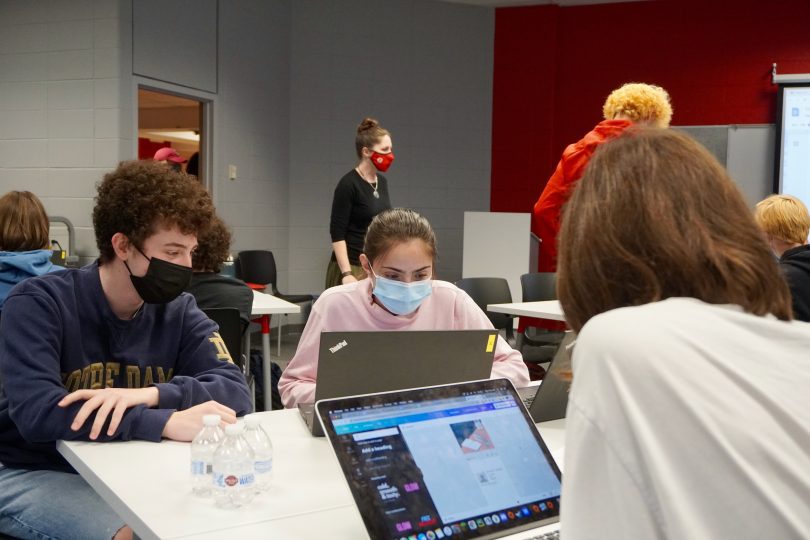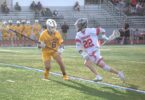Hackathons were held at both Conard and Hall high schools and throughout West Hartford students engaged in a district-wide ‘Hour of Code’ to show that computer science can be fun and should be accessible to all.
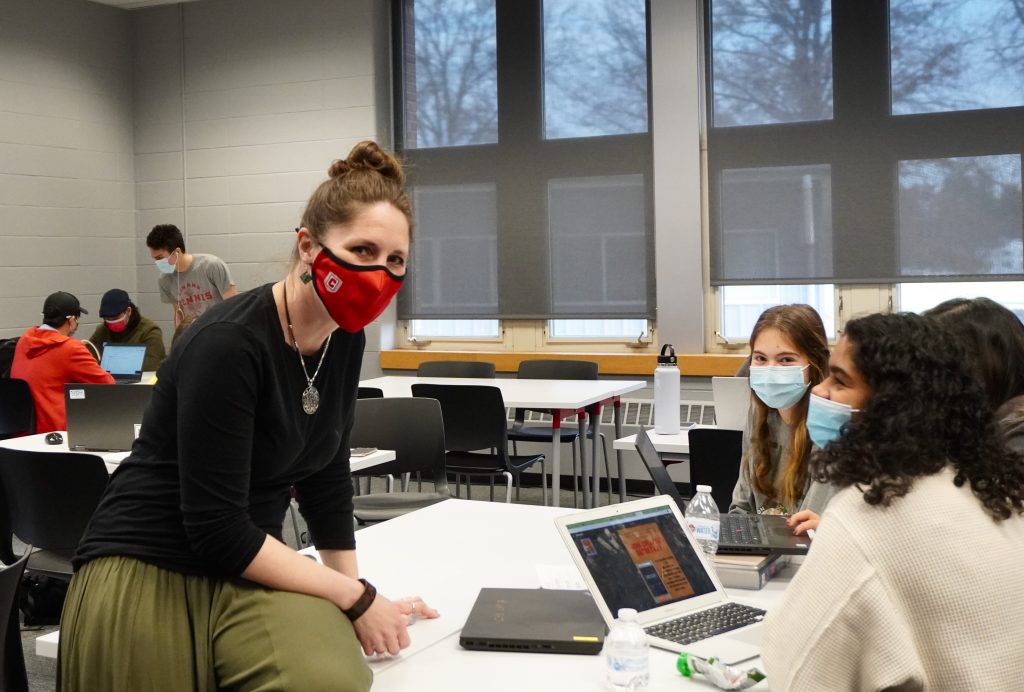
Computer science curriculum specialist Jackie Corricelli (left) works with teams of Conard students at a hackathon on Dec. 2. Photo credit: Ronni Newton
By Ronni Newton
Computer science skills benefit everyone, and West Hartford Public Schools students are taking a major step in that direction as they experience the inaugural district-wide “Hour of Code.”
“We’re getting closer to computer science for everyone,” said Jackie Corricelli, the Pre-K through grade 12 computer science curriculum specialist for the district.
Earlier this month at Conard – and the previous week at Hall – Corricelli presided over a hackathon in advance of the hour of code. Many of the roughly 50 students who participated – who are already studying computer science – have received additional training and will also become ambassadors to support other students, including those in the elementary grades.
During the Conard hackathon, students worked in teams and spent the morning responding to a prompt to create an app that would do social good for the school.
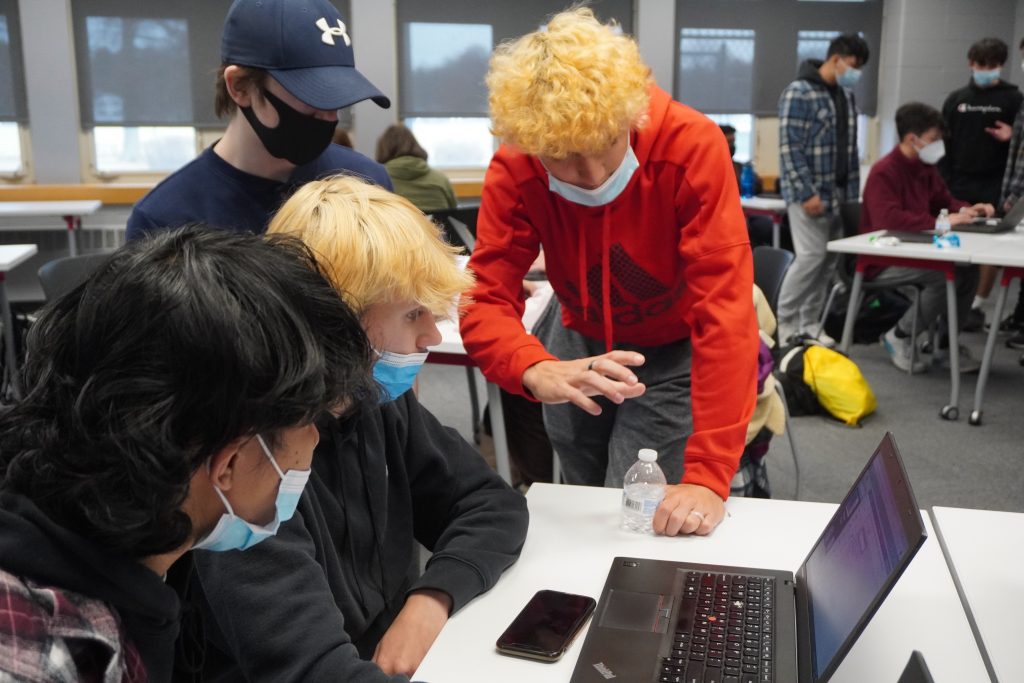
Conard students (from left) Minso Tumbahanshphe, Anthony Catanzaro, Jason Noonan, and Jake Carney work on a digital hall pass app during a hackathon on Dec. 2. Photo credit: Ronni Newton
One group created a digital hall pass.
“It allows you to sign out to go to the bathroom and the teacher can track you,” junior Jake Carney said.
Jason Noonan said sometimes teachers hand students an object – like a stuffed animal – that they carry as a hall pass, but the app would make that much less “germy,” he said.
Another team created a social media app for tutors. “Kind of like Tinder,” said junior Gabrielle Longman.
“We’re working on different parts of the same thing,” Ryan Obuchon, also a junior working on the app for tutors. The group later combined their work and tested their app, and at the end of the hackathon all presented their projects.
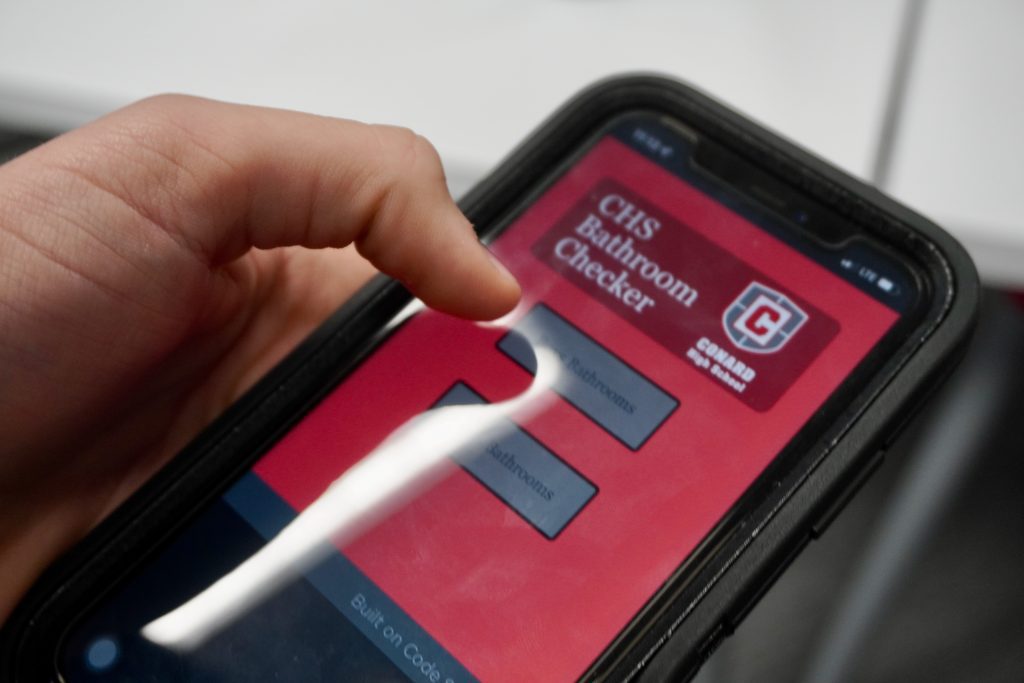
An app created by Conard students at a hackathon on Dec. 2. Photo credit: Ronni Newton
A second group at the Conard hackathon created a bathroom-focused app called “Bathroom Checker.”
“Here at the high school we’ve been experiencing an issue with the bathrooms. It’s absolute carnage,” said Max Carney. After the viral TikTok “Devious Lick” bathroom challenge earlier this year led to vandalism of some of the school’s restrooms, a limited number of facilities are available for student use.
“You can spend almost 10 minutes looking for bathrooms,” Carney said. “Our app will show you which bathrooms are open,” he said, using color coding. His group was considering a feature that would also guide students to the closest open restroom based on the classroom they started in.
“That would be an app I would buy right now,” another student remarked.
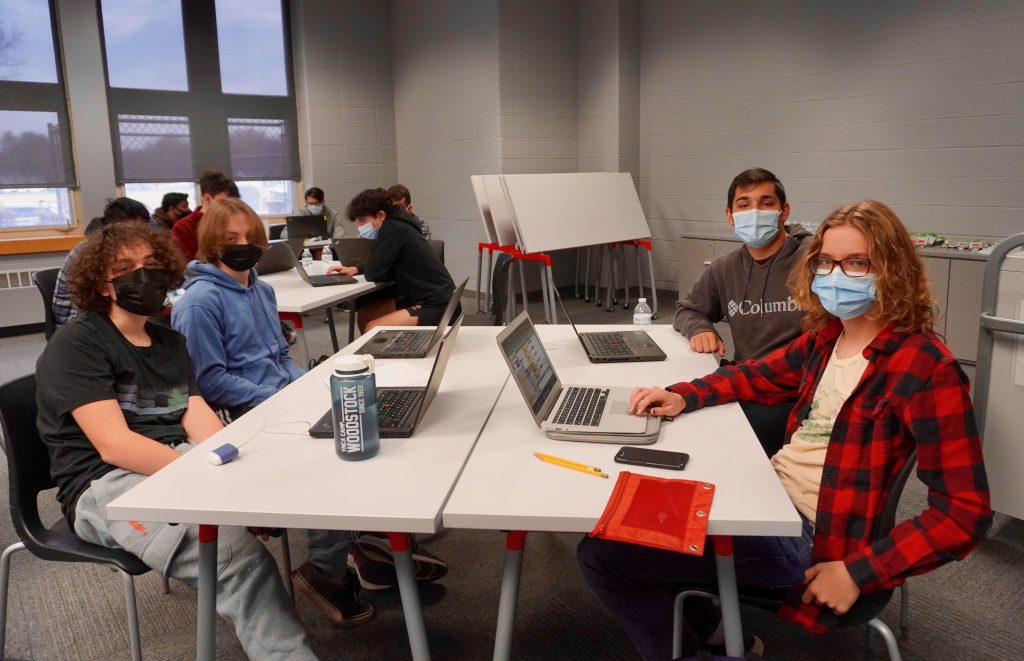
Conard students worked together on teams to develop apps for social good at the school during a hackathon on Dec. 2. Photo credit: Ronni Newton
Sophomore Max Milburn already knows he wants to study computer science. Participating in the hackathon, he said, “is definitely a good start for me.”
Crowd-sourcing provided many of the ideas that students worked to turn into apps. They used App Lab, a programming environment that is part of code.org, and created their apps in JavaScript, using either blocks or text, Corricelli said. “It’s easy to move, easy to prototype.”
Corricelli uses every opportunity she can to promote computer science, but doesn’t expect everyone to study it for a career but rather understand its applicability to all fields and subject areas.
“We’re really trying to flip that message – to [emphasize] that there’s a computer science for everyone,” she said.
She learned computer science on the job when she worked at Raytheon after college, and believes that earlier exposure will make West Hartford students more prepared for whatever they do. Learning computer science at school is also a way to overcome inequities and bring computer science to more females as well as students of color, so they’re not afraid of it.
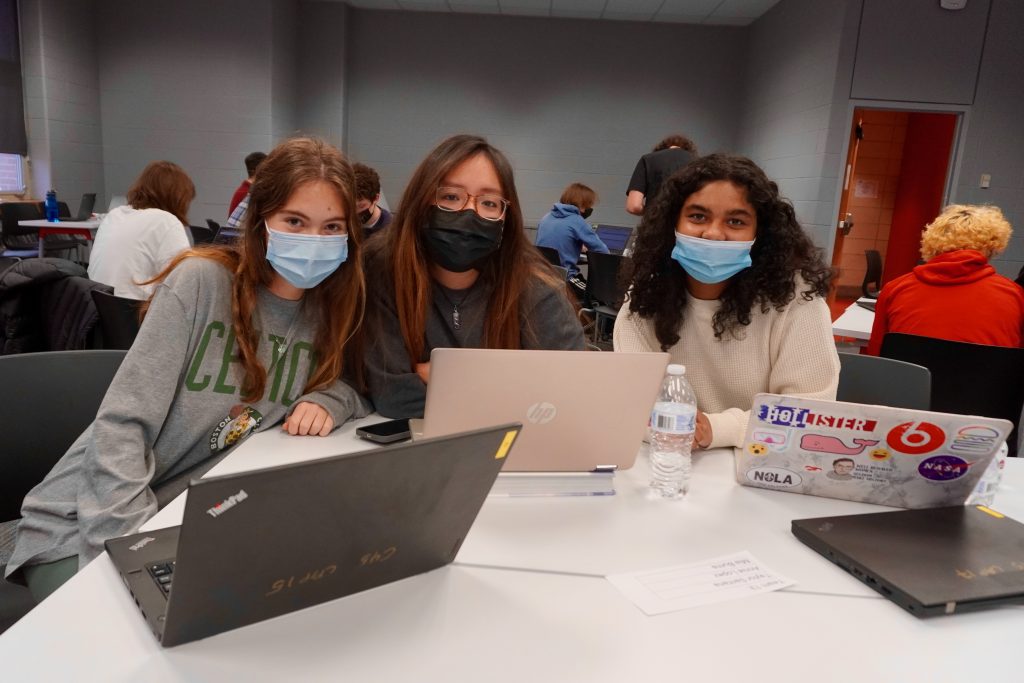
The WHY STEM group included (from left) Mia Burns, Annie Lopez, and Taylor Santana. Photo credit: Ronni Newton
The new CS ambassadors understand that computer science is an equity issue and are looking to solve it, Corricelli said. Fear, exposure, and accessibility create inequities, she said, noting that not all students can get robots for their birthdays.
In addition, devices themselves don’t always have “all voices” present, which leads to bias. Some facial recognition devices don’t accurately recognize people with darker skin, Corricelli said.
One of the teams working together at Conard’s hackathon was all-female. Seniors Mia Burns, Annie Lopez, and Taylor Santana are members of the “WHY STEM” club, comprised of girls from all grades who meet weekly and also do volunteer work to encourage involvement in STEM fields. “We try to encourage girls to do anything they want in STEM,” Lopez said, including showing students how STEM is important even in the auto shop classroom.
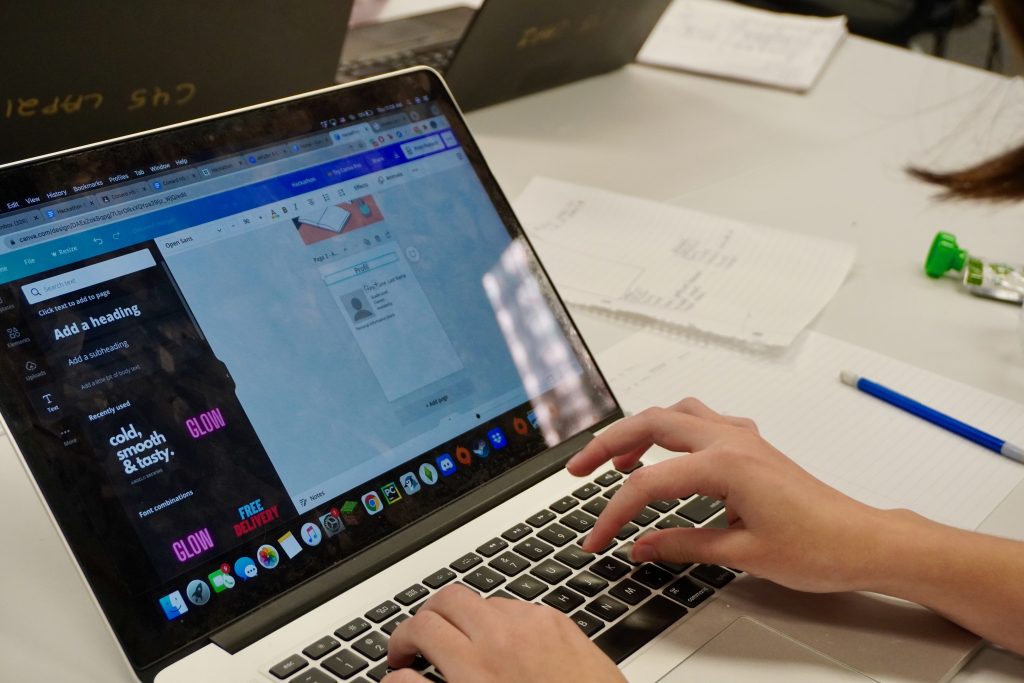
Conard students worked on teams to create apps at a hackathon on Dec. 2. Photo credit: Ronni Newton
The app Burns, Lopez, and Santana were working to create was called “College Secretary” – an organizer for students applying to college that could categorize schools by type and keep all the deadlines and other information all in one place.
This year is the first time that the entire district has implemented a computer-science focused activity. “We see this as a step toward ‘CS for all’ students,” Corricelli said.
Library media specialists support the efforts at most of the elementary schools, while math teachers are leading the efforts at the middle and high school level. “In all grade levels, integration in non-CS subjects is encouraged and supports have been provided for teachers who are interested in experimenting,” Corricelli said. One example is theater arts teacher Hunter Parker who is using computer science to create memes of characters.
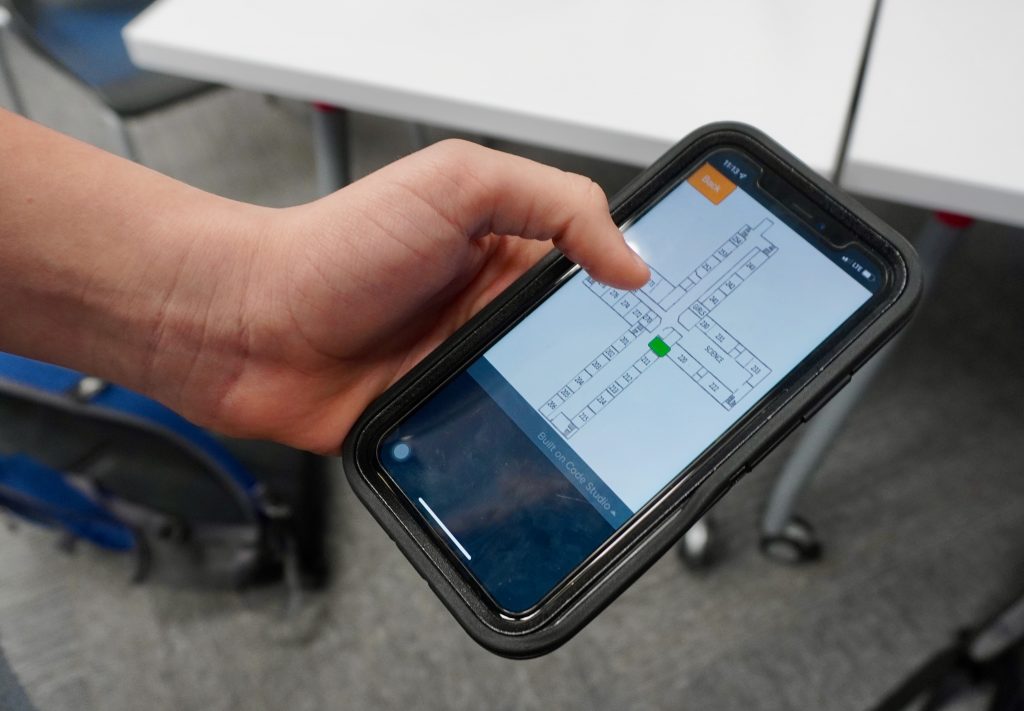
An app created by Conard students at a hackathon on Dec. 2. Photo credit: Ronni Newton
Webster Hill had some special guests attend their hour of code, held Dec. 10, including Irene Parisi, the chief academic officer for the state’s Department of Education. Dr. Roszena Haskins, West Hartford’s director of Equity Advancement, Norm Sondheimer, CSTA legislative advocate and retired UMass computer science professor, Jennifer Michalek, K-12 math education consultant for the state’s Department of Education, and Library Media Specialist David St. Germain, Library Media Specialist also participated in the day’s activities which were hosted by Webster Hill Principal Melissa Behrens, school Library Media Specialist Joseph Tavera, and fourth grade teacher Therese Horn and her students.

Connecticut Department of Education Chief Academic Officer Irene Parisi (left) worked with students at Webster Hill Elementary School on Dec. 10. Courtesy photo
“Creating, figuring out how to solve hard problems, and playing with robots” were the responses from Webster Hill students when asked what they like about computer science,” Corricelli said. “I shared that my favorite thing was cooperating with other people to solve problems.”
The hour of code model being adopted by West Hartford Public Schools is flexible, Corricellli said, and can happen anytime between Dec. 6 and February break.
Director of Elementary Education Kerry Jones, and elementary school experts such as Alison Foley, Joseph Tavera, Mary Lestini, and Carole Dibble have been instrumental in supporting the efforts at the elementary level, Corricelli said, adding that she also appreciated the assistance of secondary school supervisors Michelle Graveline and Monique Albani-Ethier and math teachers, along with the high school computer science ambassadors.
“In West Hartford, we believe in an amazing education for all students; that we support all students to ‘realize their potential and enhance their global community,'” Corricelli said. “CS is part of that amazing education. It has to be.”
More information about the district’s computer science curriculum can be found here.
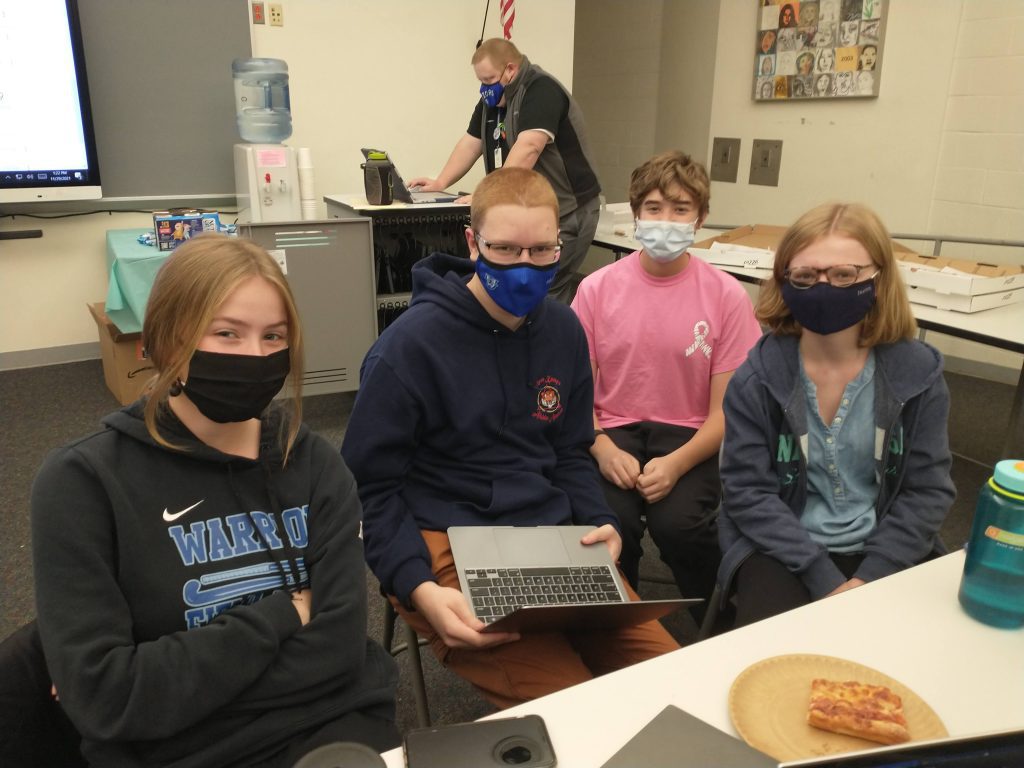
Hall High School students participate in a hackathon on Nov. 29, 2021. Courtesy photo

Hall High School students participate in a hackathon on Nov. 29, 2021. Courtesy photo
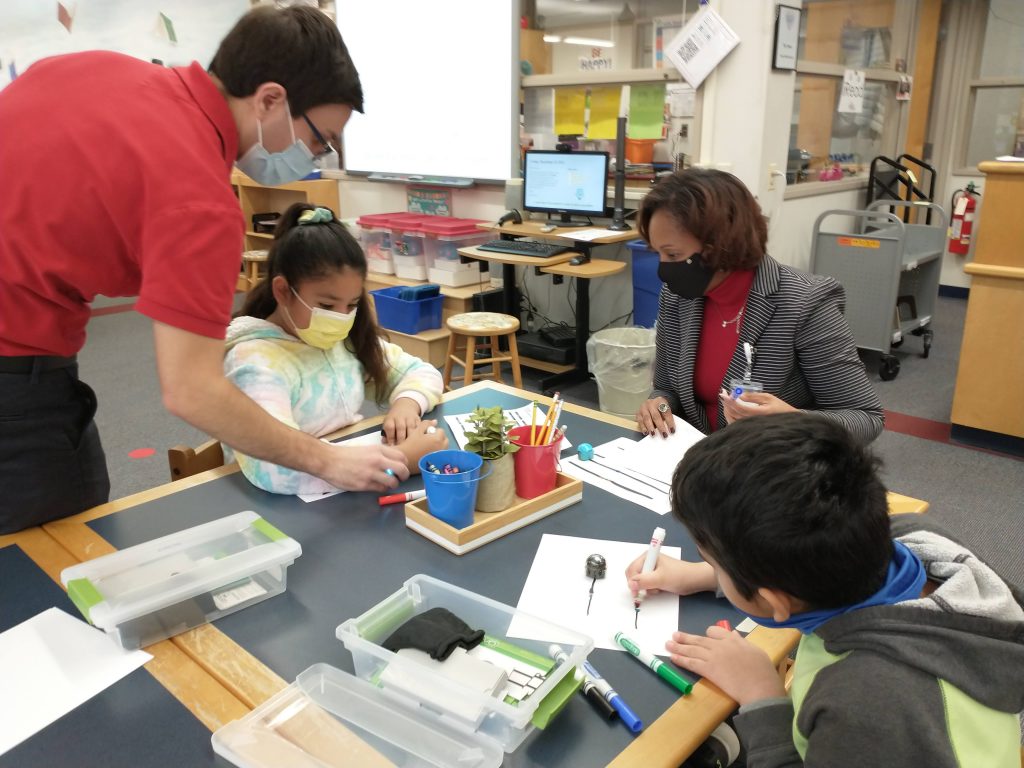
Director of Equity Advancement Dr. Roszena Haskins participates in the Hour of Code at Webster Hill on Dec. 10. Courtesy photo
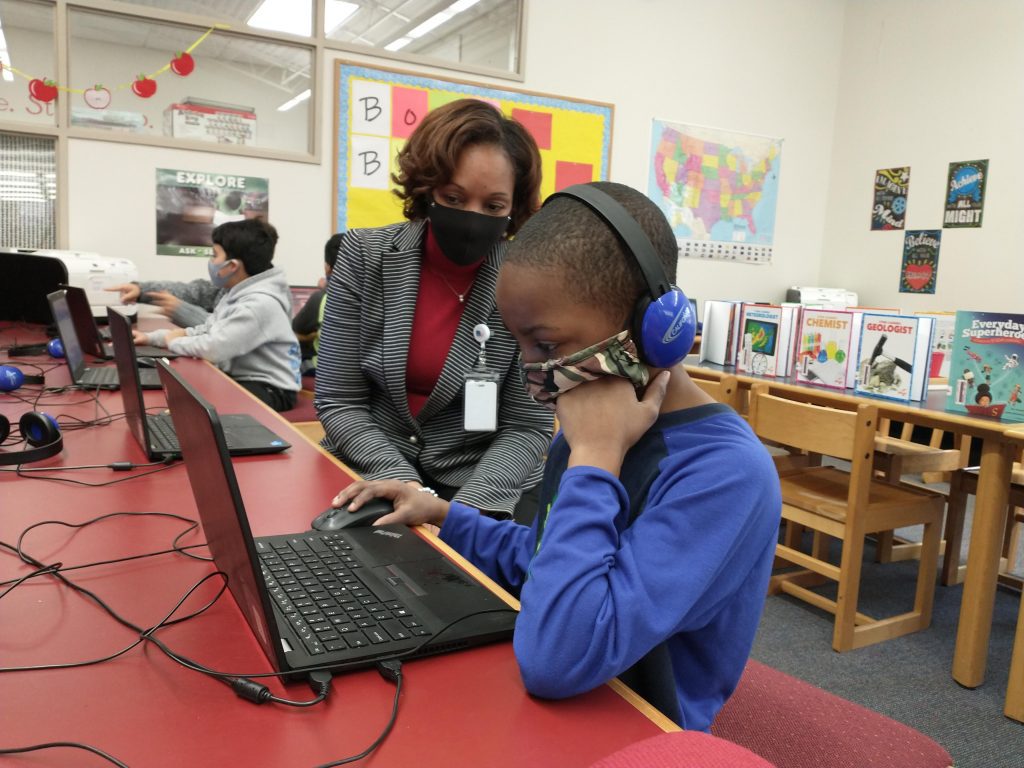
Director of Equity Advancement Dr. Roszena Haskins participates in the Hour of Code at Webster Hill on Dec. 10. Courtesy photo
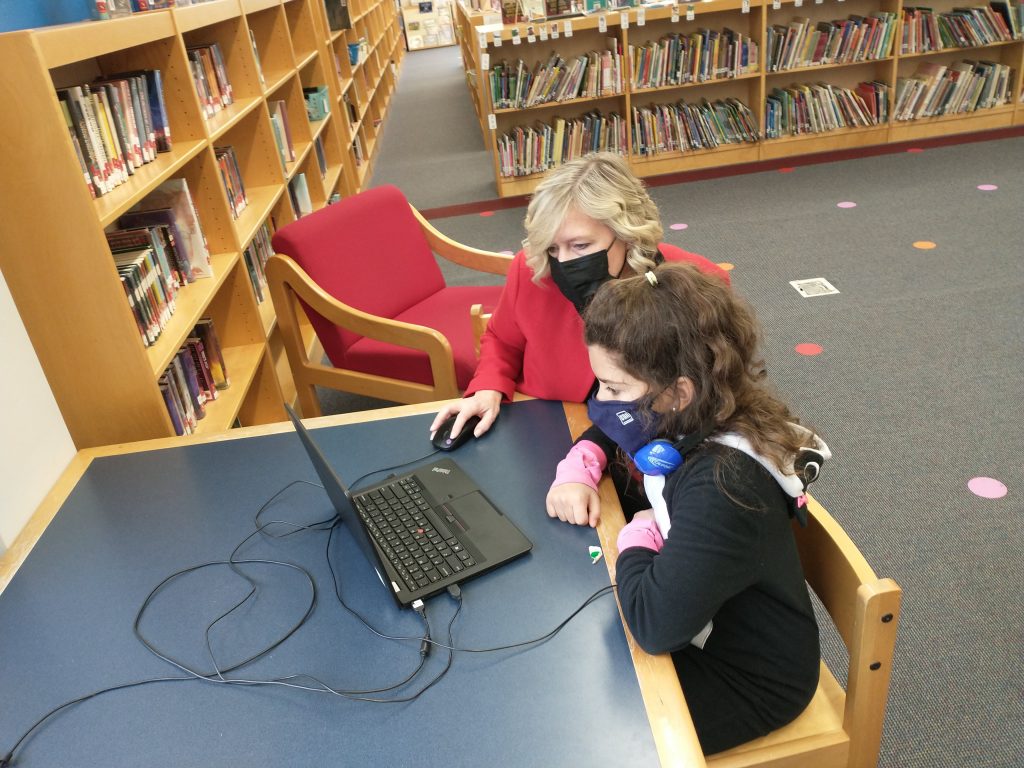
Connecticut Department of Education Chief Academic Officer Irene Parisi (left) worked with students at Webster Hill Elementary School on Dec. 10. Courtesy photo
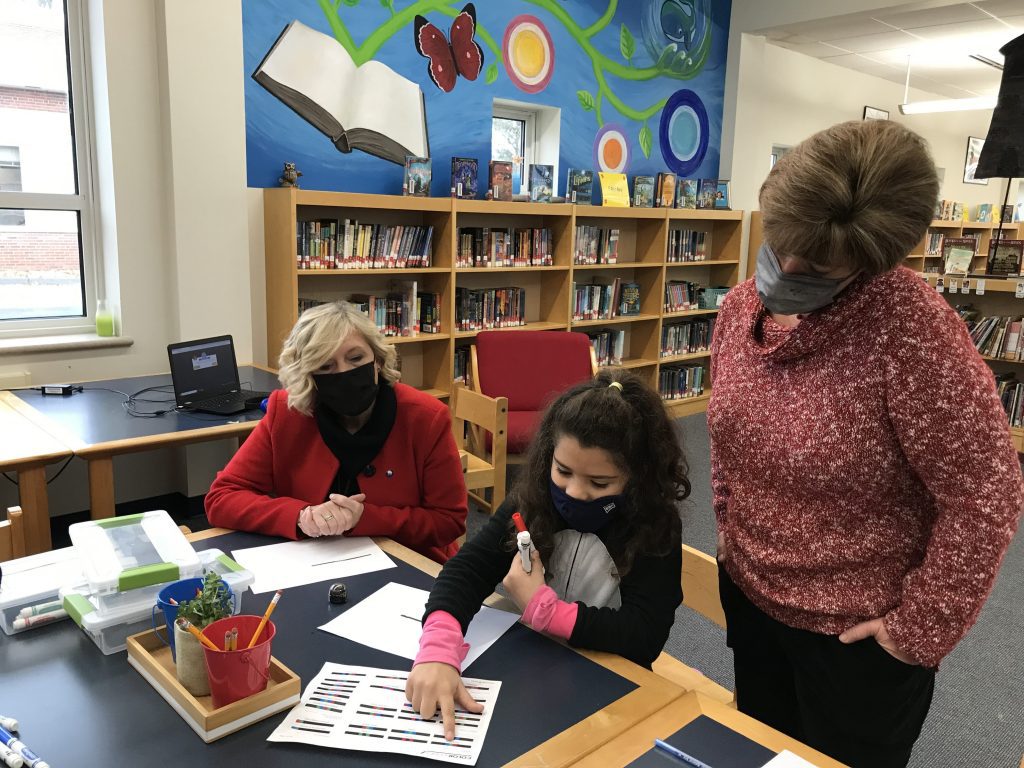
Connecticut Department of Education Chief Academic Officer Irene Parisi (left) worked with students at Webster Hill Elementary School on Dec. 10. Courtesy photo
Like what you see here? Click here to subscribe to We-Ha’s newsletter so you’ll always be in the know about what’s happening in West Hartford! Click the blue button below to become a supporter of We-Ha.com and our efforts to continue producing quality journalism.

